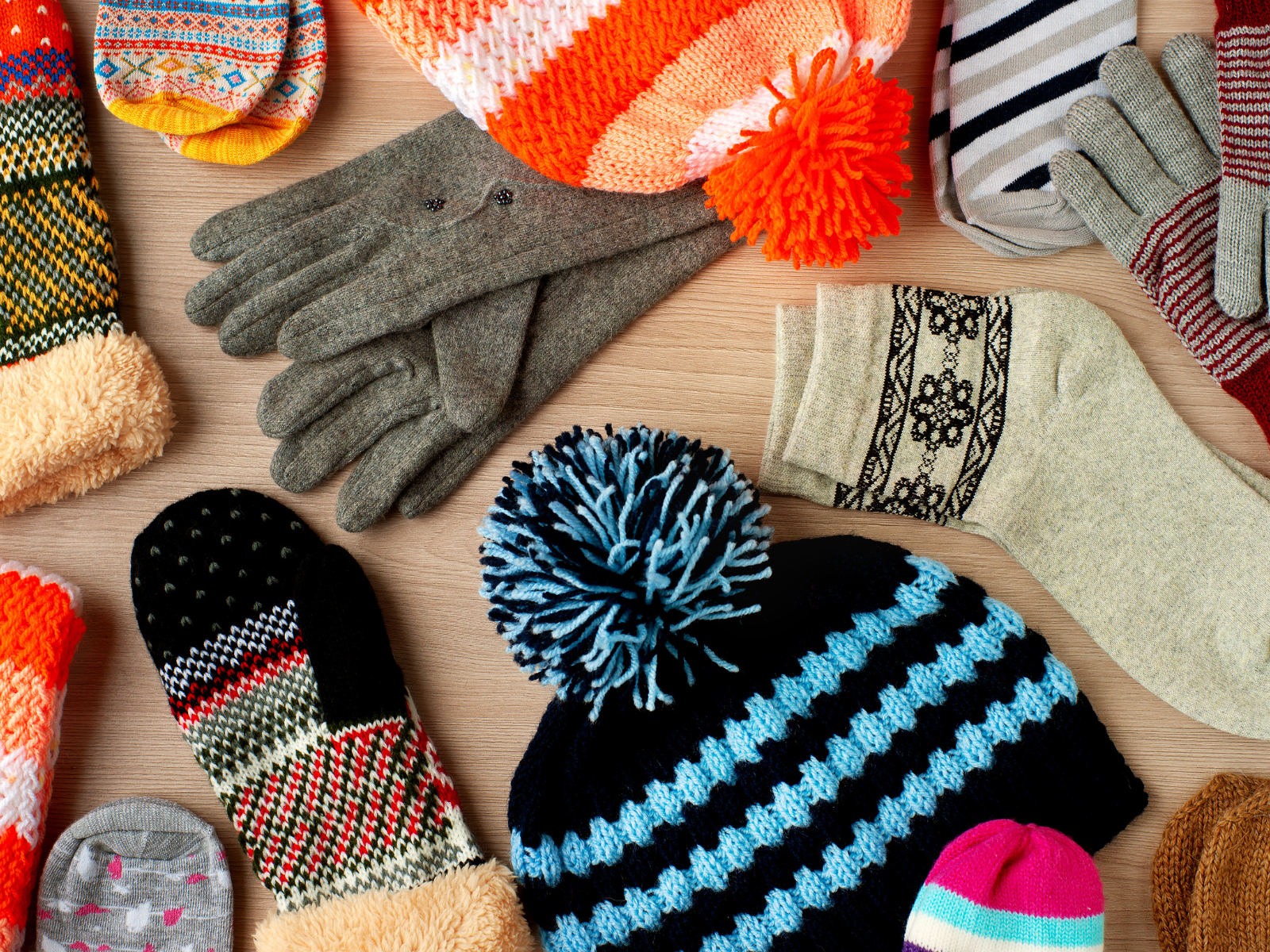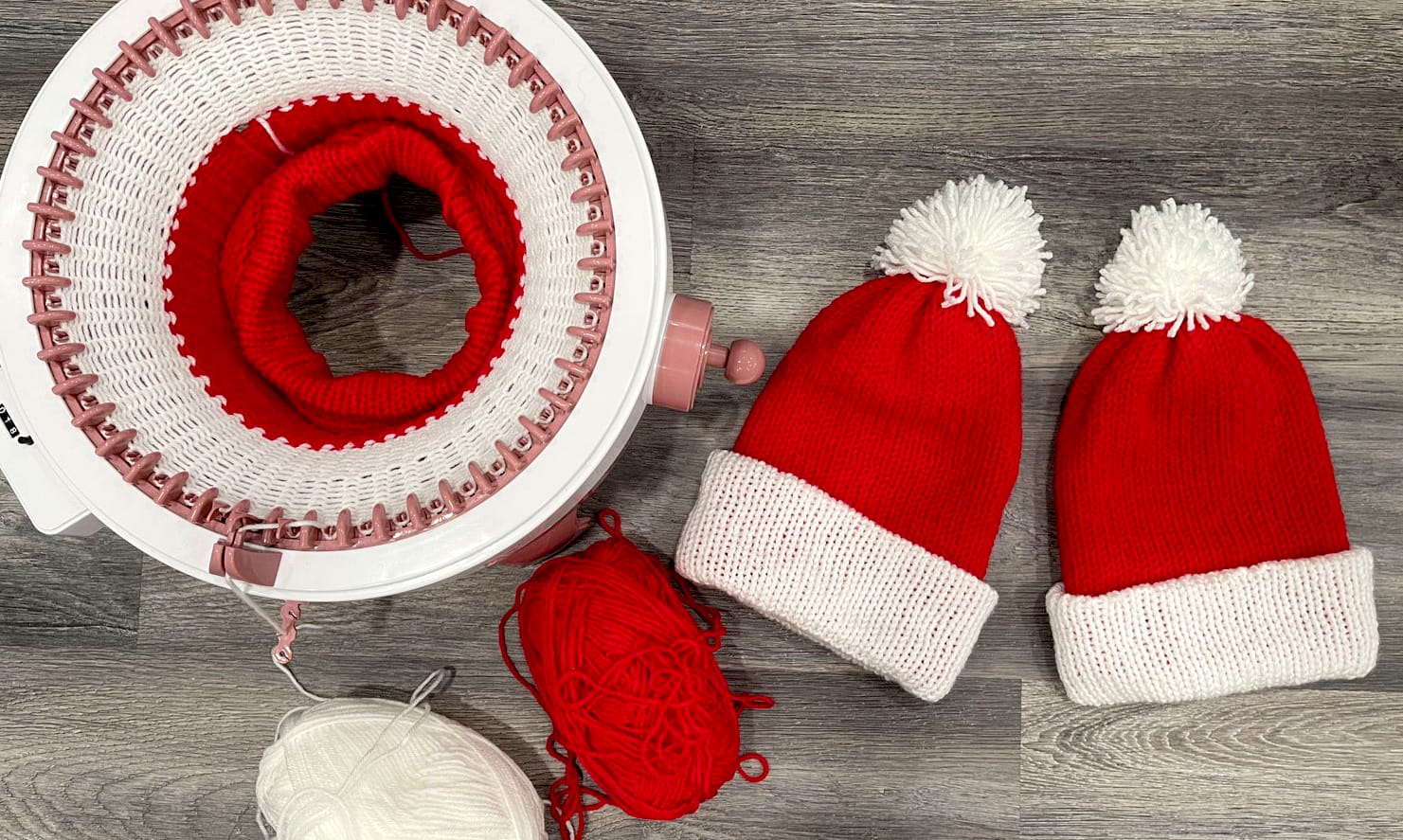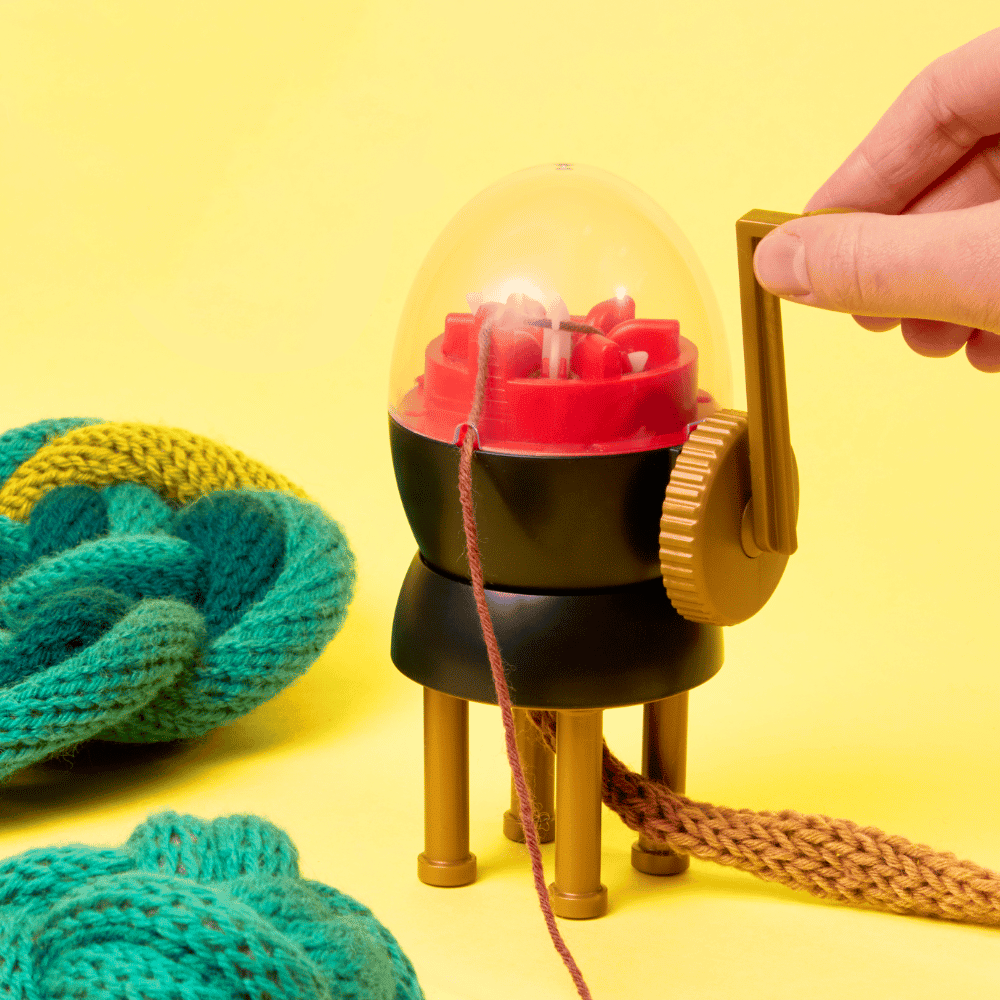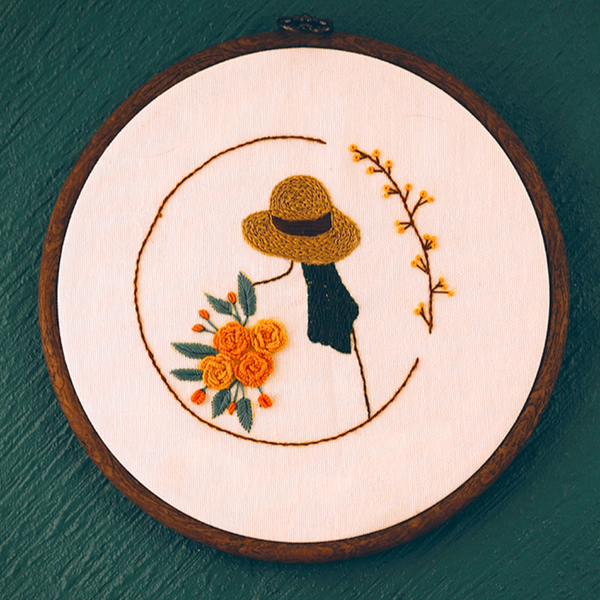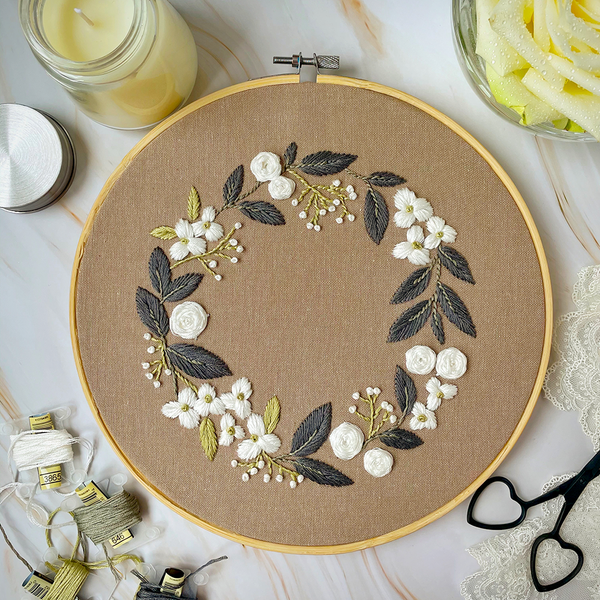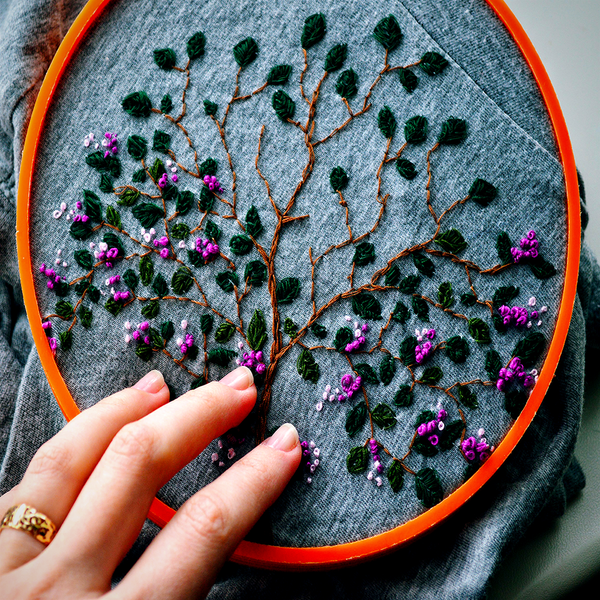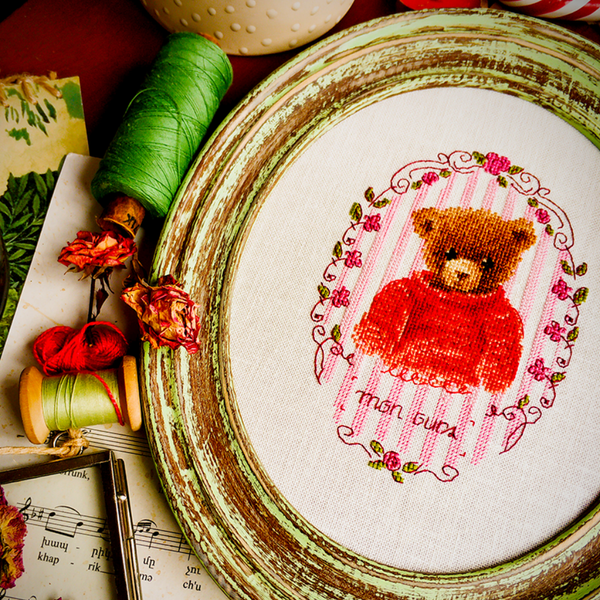In the vast landscape of creative endeavors, knitting machines stand as marvels that blend tradition with modern techniques, offering makers a swift avenue to bring intricate fabric designs to life.
With a resurgence in the appreciation of crafting, especially within younger demographics, knitting machines are igniting interest and discussions on just how far the craft of knitting can stretch.
From hobbyists to professional textile designers, the capabilities of these machines are pushing the boundaries of what we traditionally associate with knitting.
Knitting machines have revolutionized the way we create knitted items, offering speed and precision that can be a game-changer for both hobbyists and professionals.
But the question remains: can you knit anything on a knitting machine?
This comprehensive guide will delve into the capabilities and limitations of knitting machines, providing you with a clear understanding of what you can achieve with these innovative tools.
Key Takeaways:
- Knitting machines can handle a wide range of projects, from simple scarves to complex sweaters, but they have limitations.
- Understanding the different types of knitting machines and yarns is crucial for successful machine knitting.
- With the right knowledge and practice, you can create your own patterns and knit intricate designs on a knitting machine.
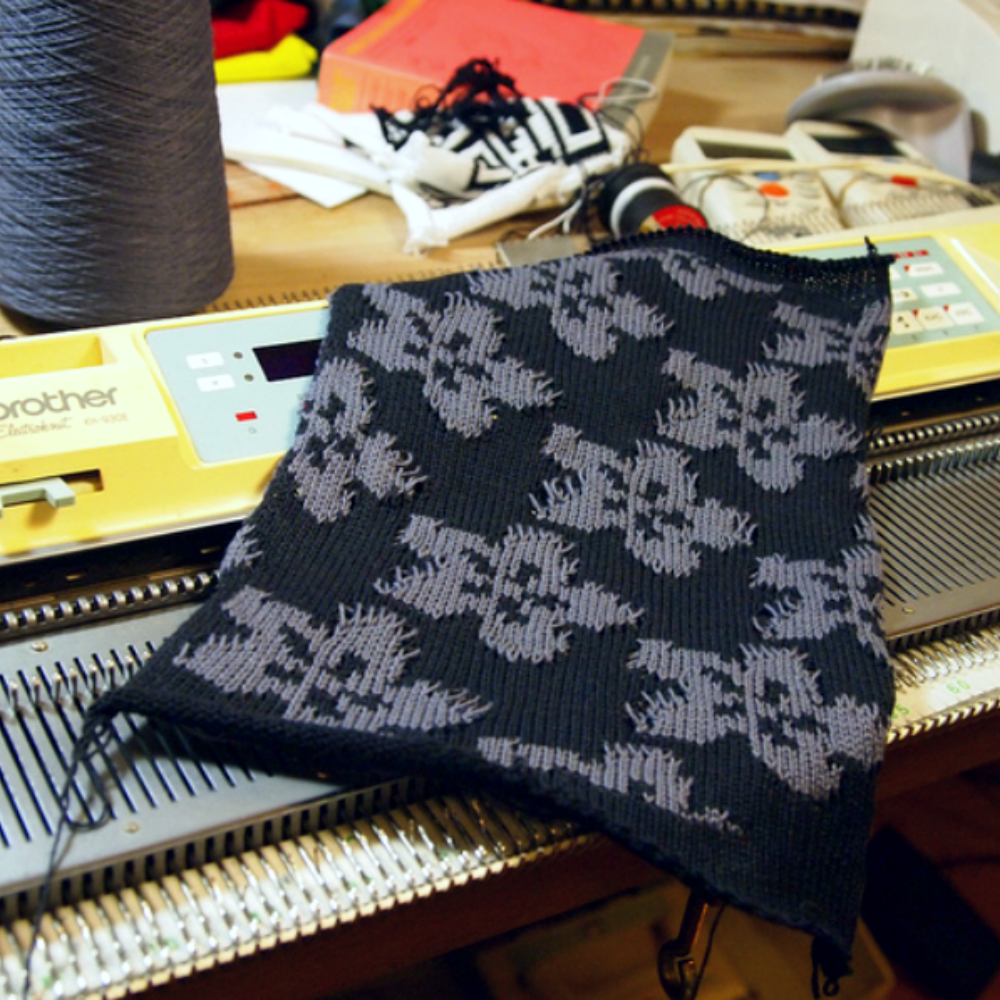
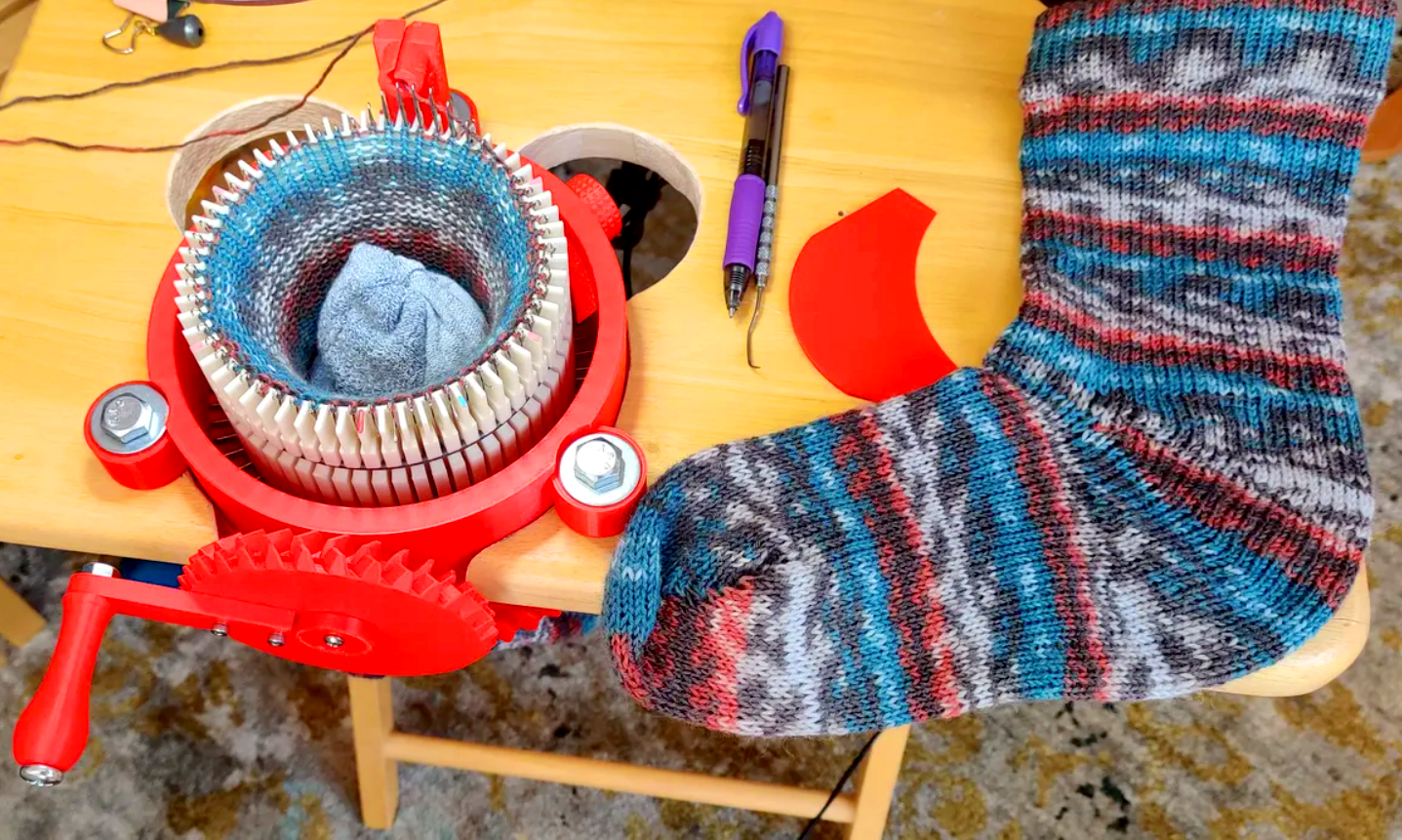
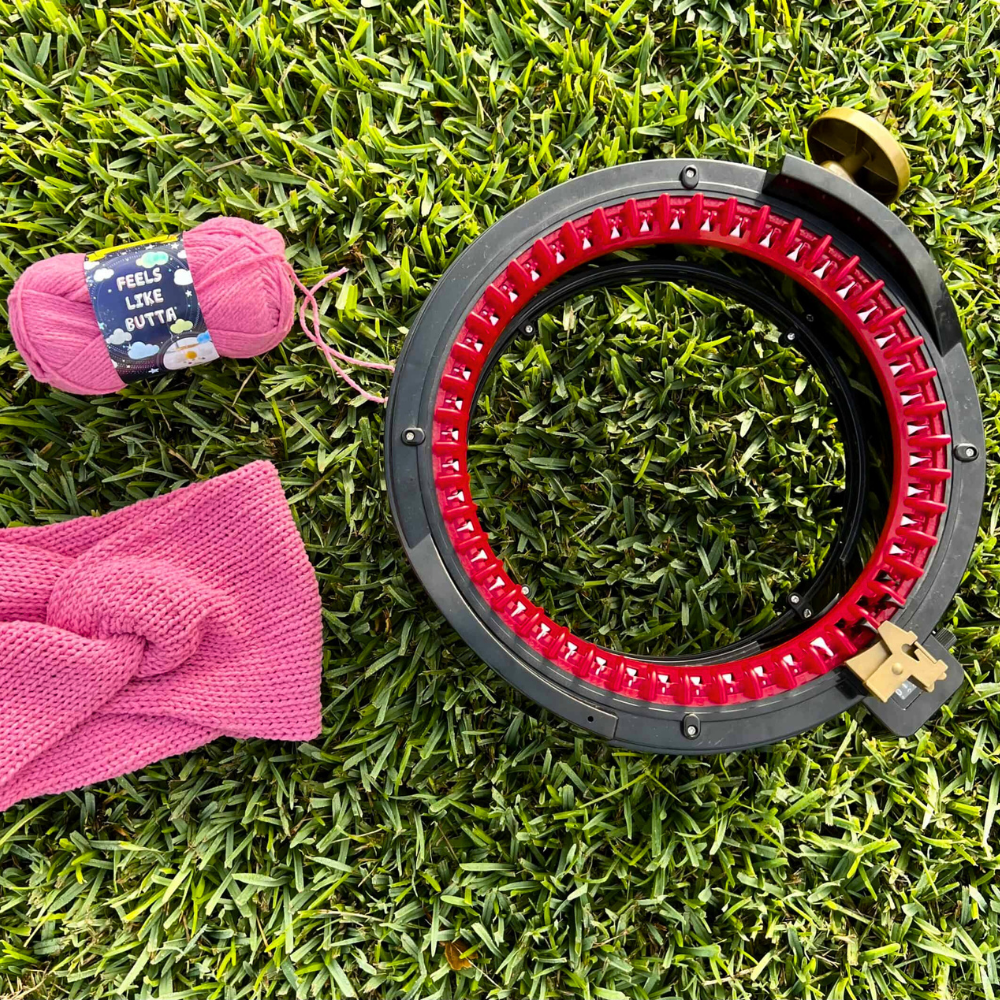
Understanding Knitting Machines
Knitting machines come in various forms, including flat bed knitting machines and circular knitting machines.
Each type is designed for specific knitting projects and yarn weights.
Flat beds are ideal for creating flat pieces like scarves and sweaters, while circular machines excel at making seamless tubes for items like socks and hats.
The key to successful machine knitting is selecting the right machine for your project.
In addition, it's crucial to use the appropriate yarn weight and tension for your machine.
Using the wrong type of yarn can result in a messy or uneven knit.
Pushing the Boundaries of Traditional Knitting
One of the most exciting aspects of knitting machines is their ability to create complex patterns and designs quickly and accurately.
With traditional hand-knitting, intricate patterns can take hours or even days to complete, depending on the skill level of the knitter.
But with a knitting machine, these same patterns can be replicated in minutes or hours, depending on the size of the project.
This opens up endless possibilities for creating unique and intricate designs that may not have been feasible before.
Machine knitting patterns have expanded the possibilities of what can be created on a knitting machine.
From simple knit patterns to more complex designs, these machines can produce a wide array of knitted items.
However, it's important to note that while knitting machines are versatile, they may not be able to replicate every hand-knitting technique.
Yarn Weight and Machine Knitting
Yarn weight plays a significant role in machine knitting.
The right yarn can make the difference between a successful project and a frustrating experience.
Most knitting machines work best with specific yarn weights, such as worsted weight yarn.
It's essential to consult your machine's instructions to determine the appropriate yarn weight for your knitting projects.
Circular Knitting Machine Patterns
Circular knitting machines are designed to create knitted tubes, which are perfect for items like hats and socks.
Circular knitting machine patterns are available to help you create these items with ease.
The patterns provide detailed instructions on how to set up your machine and feed yarn correctly to achieve the desired result.
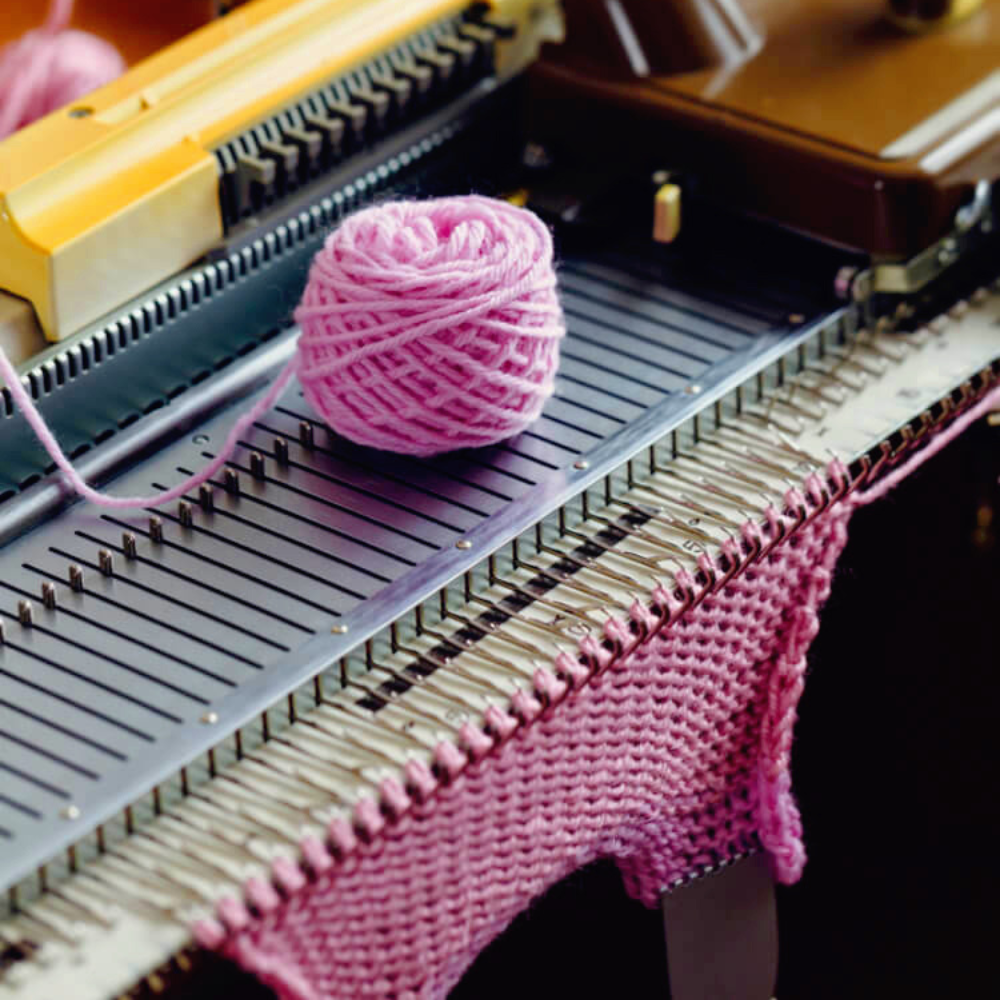
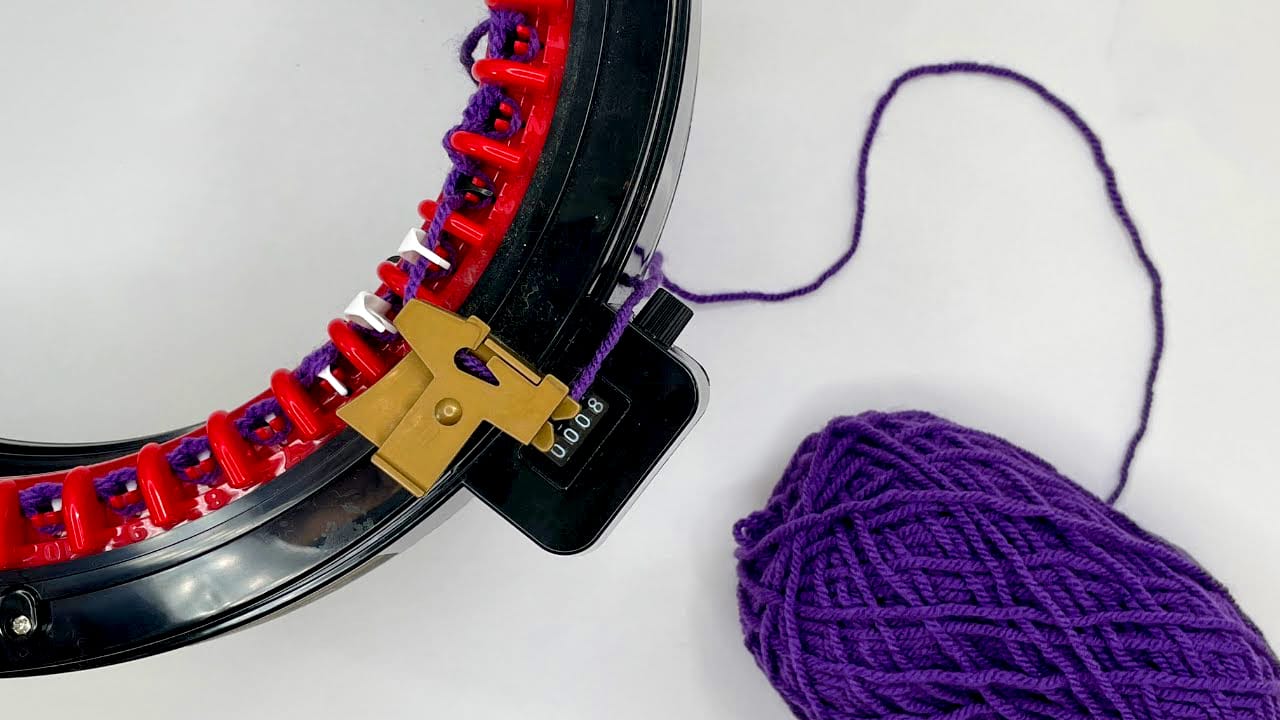
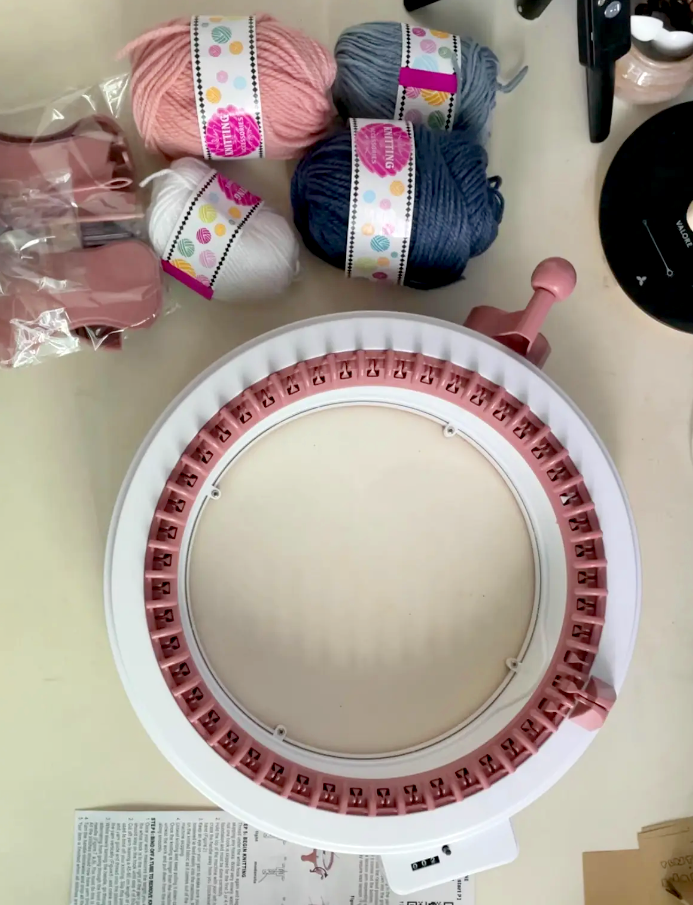
Addi Knitting Machine Experience
Addi knitting machines are popular among knitters for their ease of use and quality construction.
These machines are known for creating knitted tubes and flat panels efficiently.
With Addi machines, even beginners can start knitting projects like scarves and beanies in just a few hours.
The machines come with a detailed manual and instructional DVD to help you get started.
With practice, you can even create your own designs using Addi knitting machines.
Sentro Knitting Machine: Beginner's Choice
The Sentro knitting machine is another option that's well-suited for beginners.
Its simplicity and user-friendly design make it a great choice for those looking to start a new hobby in machine knitting.
The learning curve is gentle, allowing new users to quickly start creating their own knitted items.
And with the right knowledge and practice, you can move on to more complex patterns and designs.
Knitting Socks on a Machine
A sock knitting machine is a type of circular knitting machine specifically designed for creating knitted socks.
These machines can knit socks much faster than hand knitting, making them a big advantage for those looking to start a knitting business or simply save time on their knitting projects.
Sock knitting machines come with various cylinder sizes to accommodate different sock sizes and yarn weights.
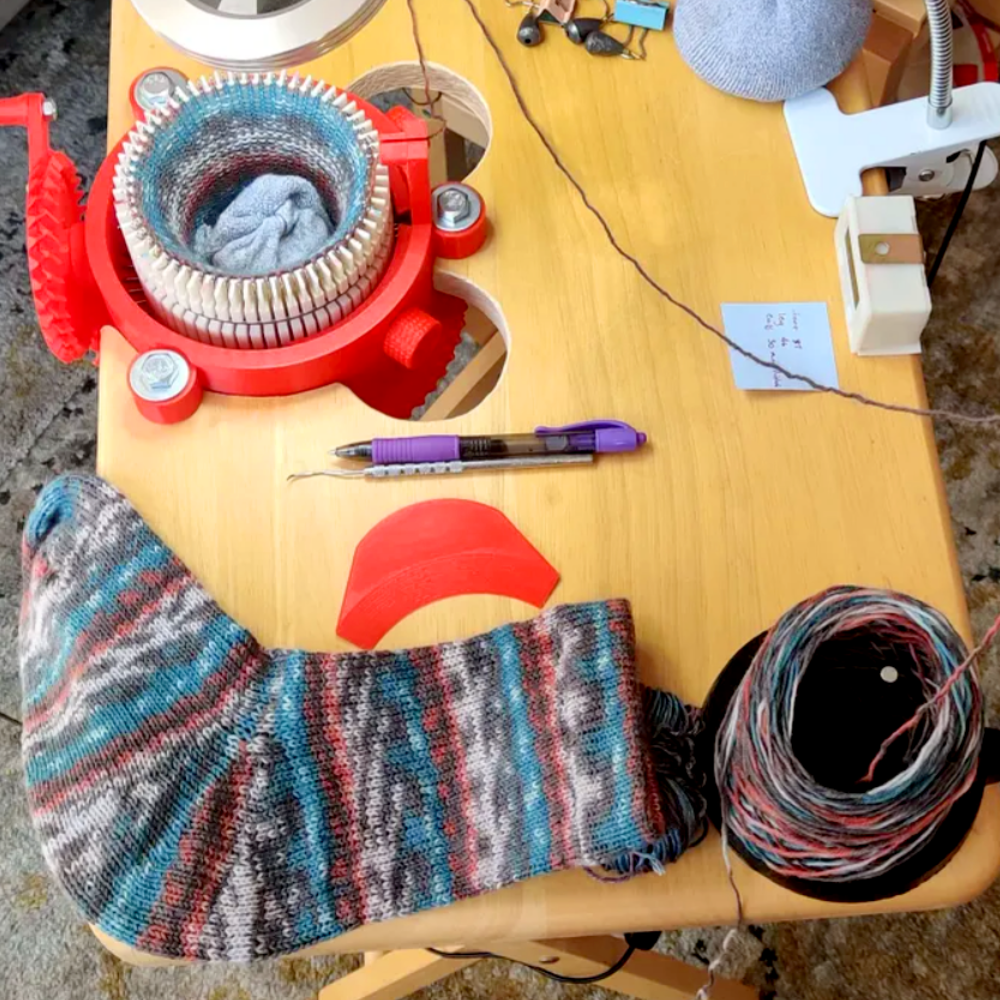
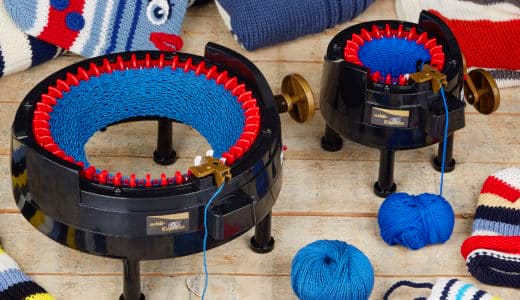
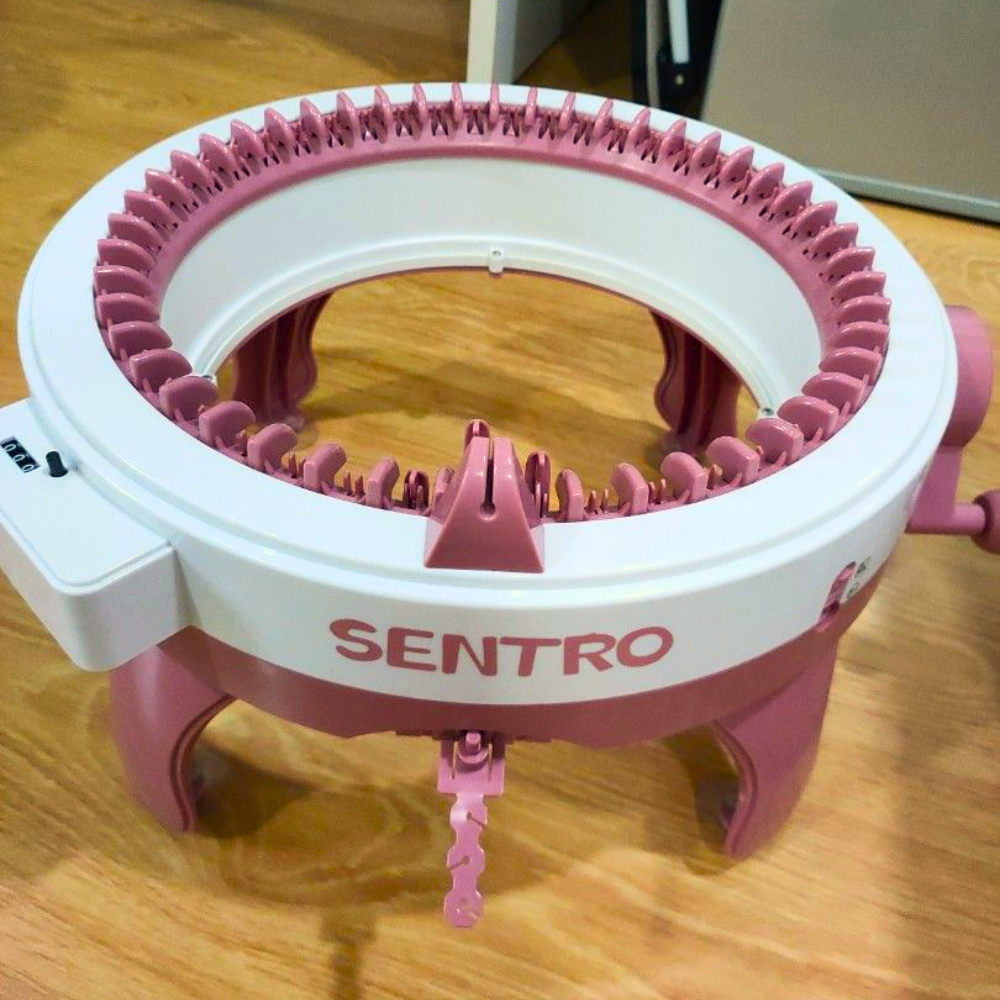
Creating Your Own Patterns
One of the joys of knitting is creating your own patterns.
With a knitting machine, you can still exercise your creativity by designing your own patterns.
While there is a learning curve, once you understand how to manipulate the stitches and rows, you can create unique and custom knitted items.
There are also software programs available that can help you design and create patterns for machine knitting.
Customizing Knitwear with a Flat Bed Knitting Machine
Flat bed knitting machines are a marvel for those looking to customize their knitwear with precision and speed.
Unlike circular machines, flat bed variants offer the ability to create intricate patterns and textures that are often associated with hand knitting.
With the turn of a stitch dial, knitters can adjust the tension and density of their work, allowing for a range of fabric types from delicate lace to chunky sweaters.
The flat bed's versatility is particularly evident when executing complex colorwork or shaping garments, as it can handle various yarn weights and types with ease.
The mattress stitch is a technique often used in conjunction with flat bed knitting machines to seamlessly join pieces of fabric.
This invisible seam is crucial for professional-looking finished garments, especially when creating sweaters or cardigans.
Machine knitters can produce panels of fabric on their flat bed machines and then use the mattress stitch to assemble the pieces, resulting in a garment that rivals the quality of hand-knitted items.
The ability to combine machine efficiency with hand-finishing techniques like the mattress stitch is what makes the flat bed knitting machine a powerful tool for both hobbyists and professionals.
Knitting Larger Items: King Size Challenges
When it comes to knitting larger items like king-size blankets or adult sweaters, the limitations of your knitting machine become more apparent.
While it's possible to create large pieces, it may require additional steps such as sewing multiple panels together, which can be time-consuming.
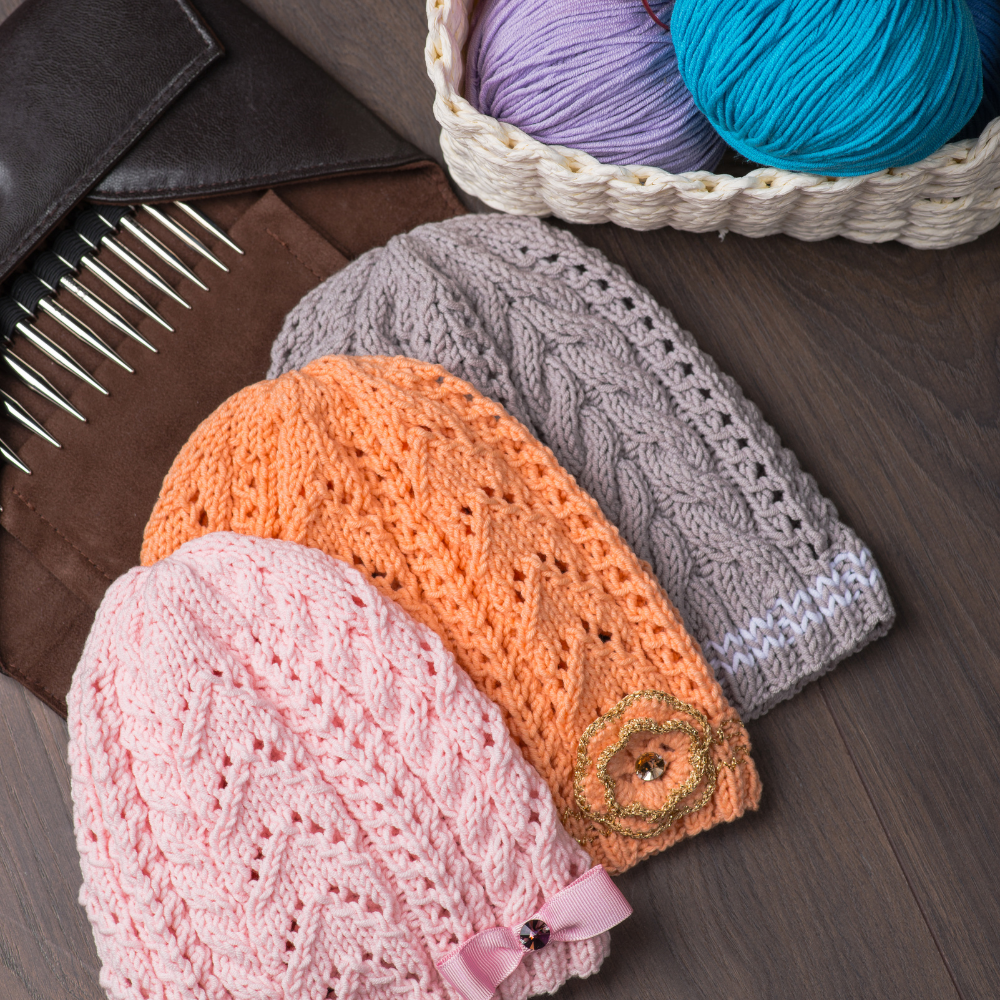
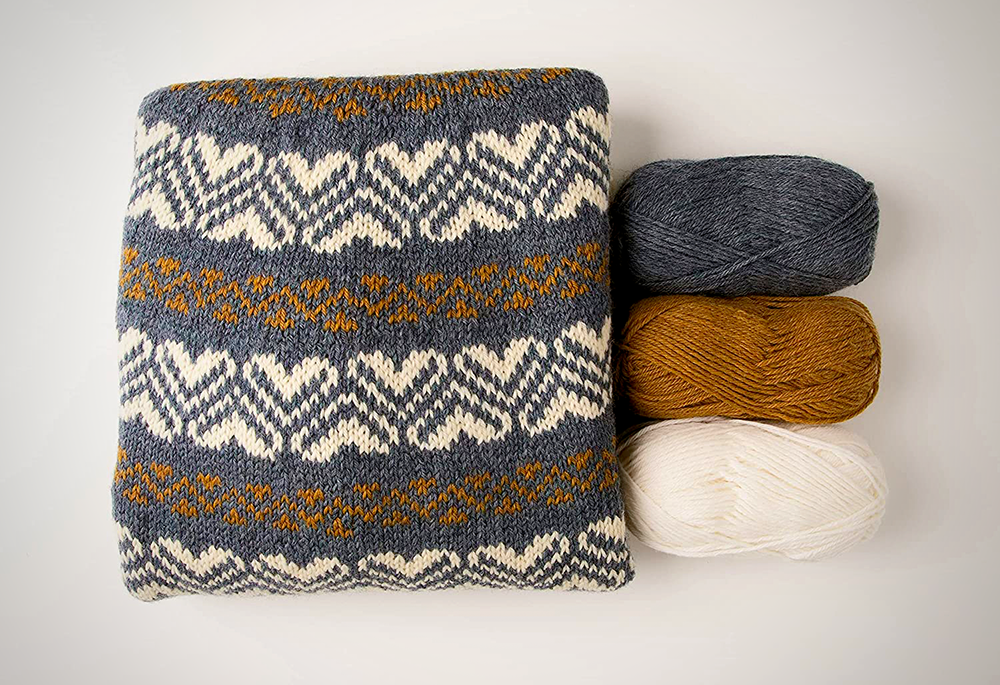
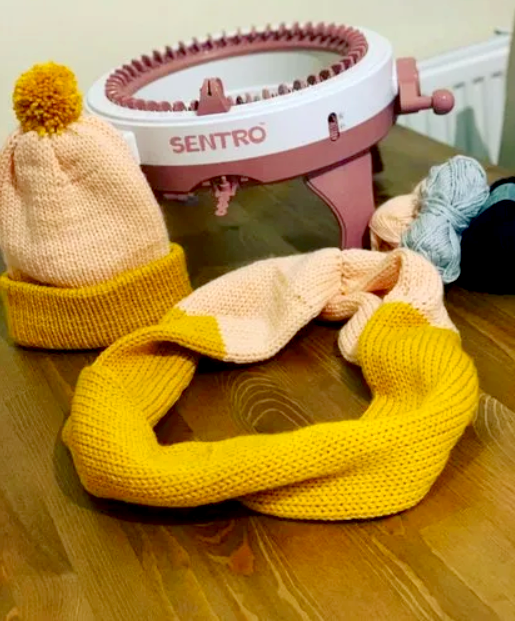
Machine and Hand Knitting Techniques
For intricate designs that a knitting machine cannot replicate, combining machine and hand knitting techniques can be the solution.
You can quickly knit the basic structure of an item on the machine and then add detailed hand-knitted elements, such as cables or lace, to enhance the final product.
Hand Knit vs. Machine Knit Differences
The debate between hand knit and machine knit items often centers on the quality, texture, and personal touch.
Hand knitting, performed with tools such as circular needles, allows for a level of detail and customization that machines can't always replicate.
Each stitch reflects the knitter's technique and style, resulting in a unique piece every time.
The tactile experience of hand knitting, along with the rhythmic motion of the needles, is also considered therapeutic by many enthusiasts.
Conversely, knitting machines streamline the process, producing consistent results at a much faster pace.
While the hand crank on a machine may mimic the motion of hand knitting, the mechanical precision ensures uniformity in every piece.
This can be particularly beneficial for those looking to produce knitwear commercially.
However, it's important to note that even with a machine, the human element is not entirely absent.
The setup, yarn guide adjustments, and monitoring of the knitting process still require a skilled hand to ensure the highest quality output.
Transitioning from Hand Knitting to Machine Knitting
Hand knitters looking to transition to machine knitting should be prepared for a different experience.
While the basic principles of knitting remain the same, the mechanics of operating a machine require a new set of skills.
Patience and practice are key to mastering machine knitting.
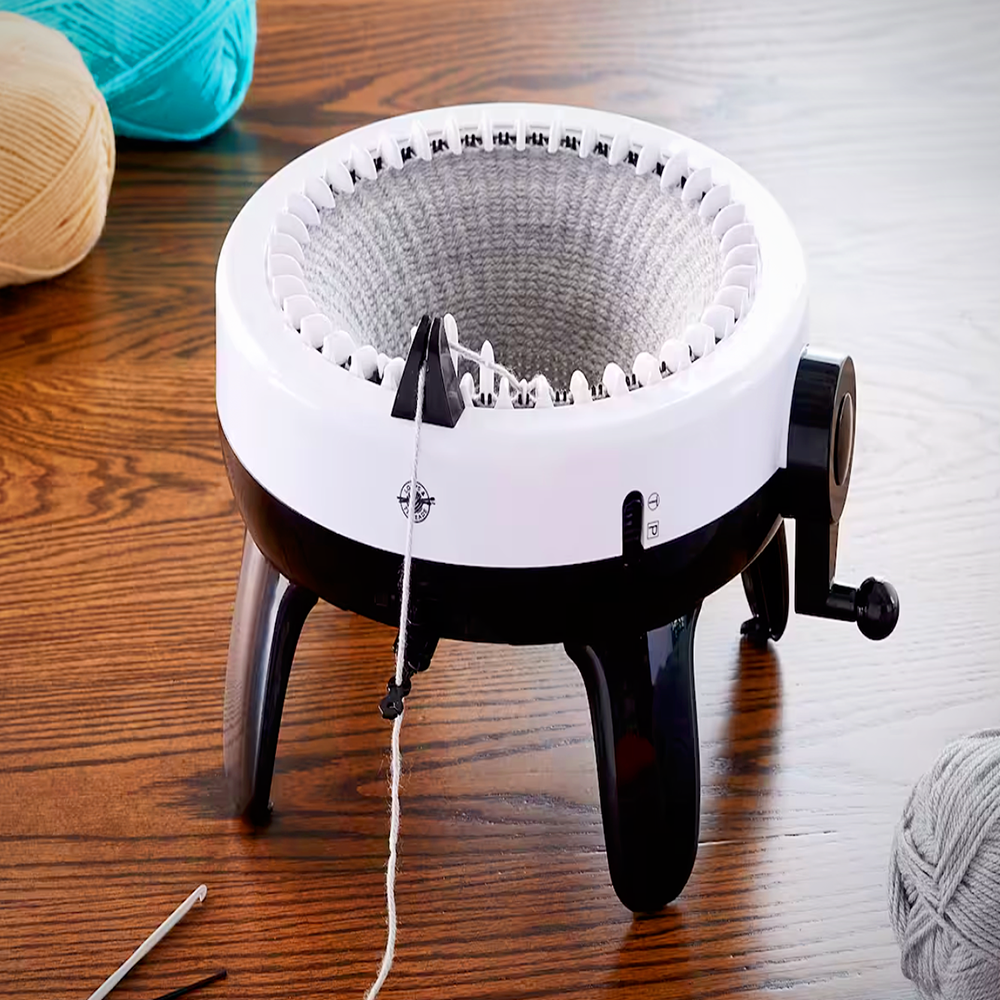
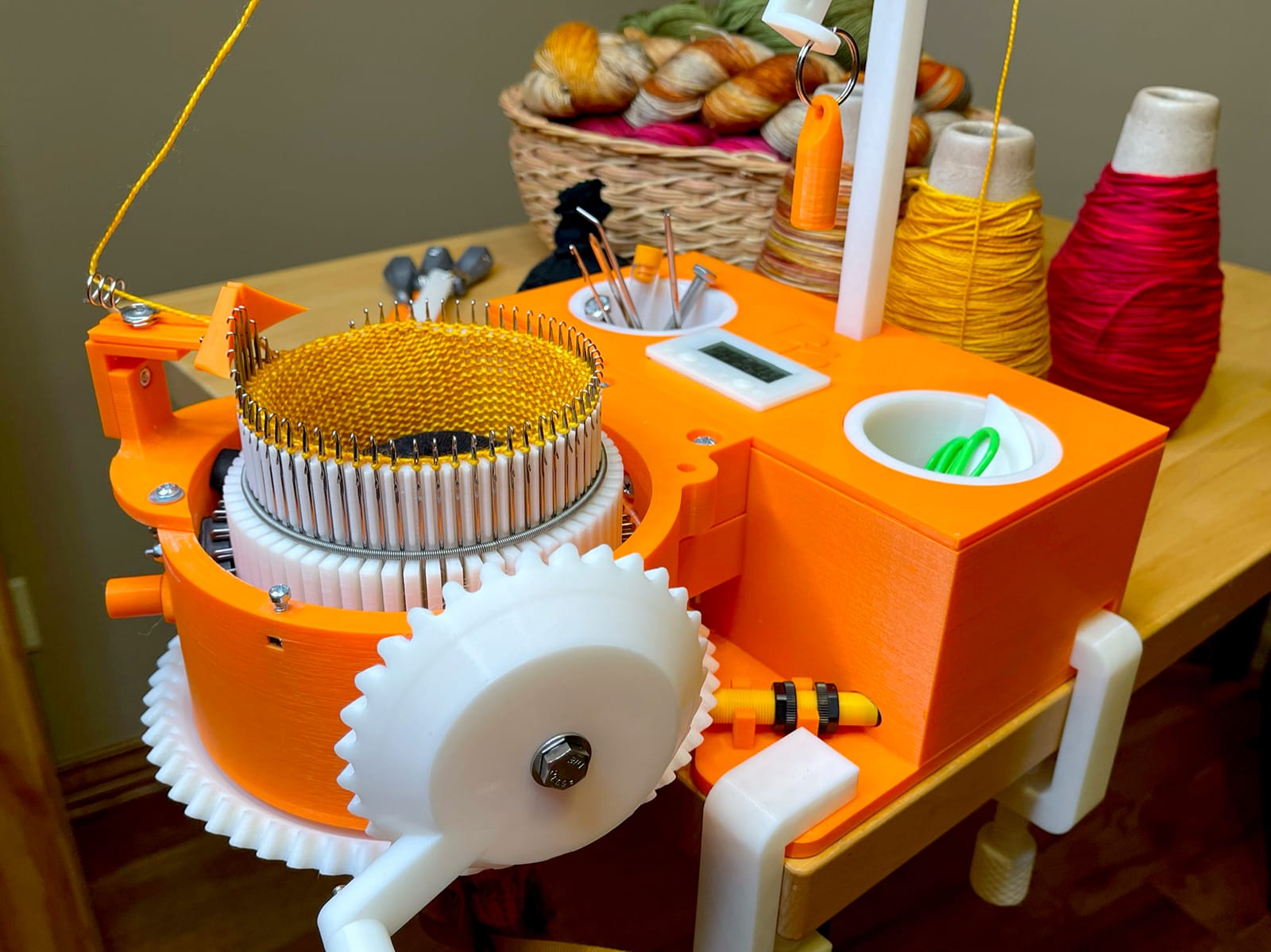
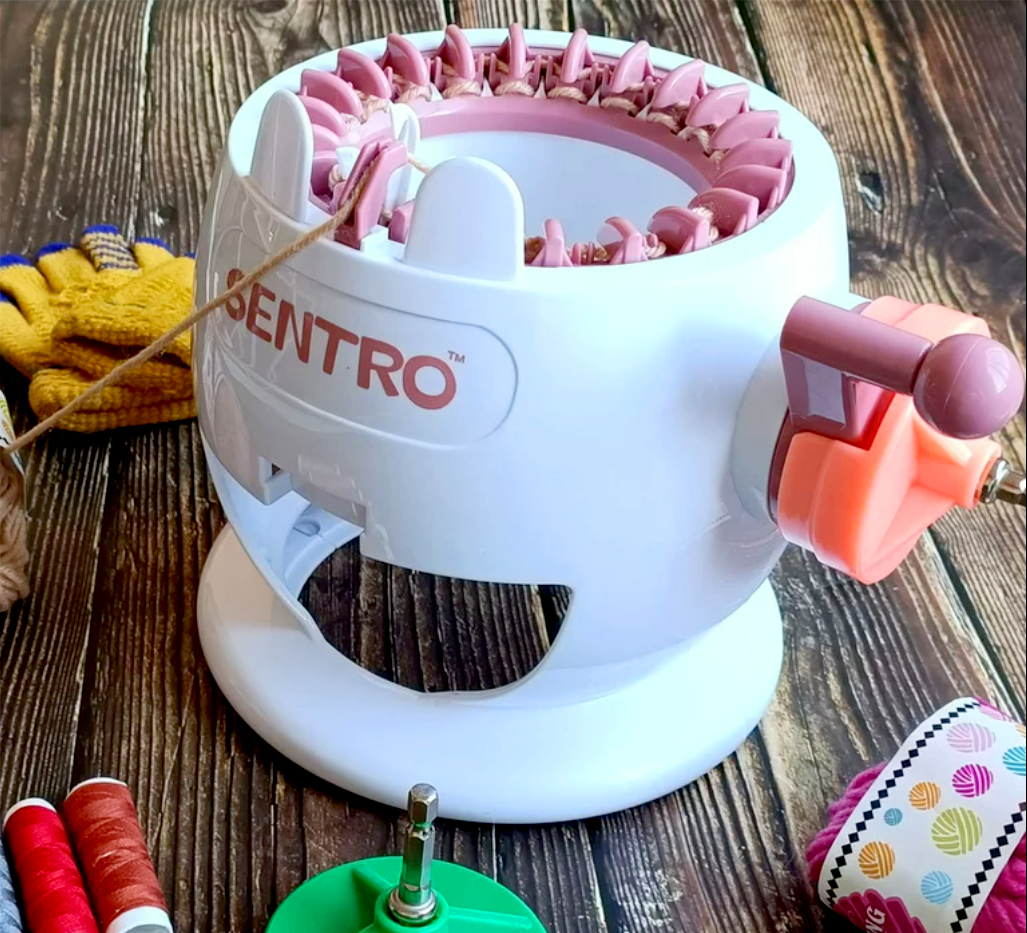
Advanced Tools: Row Counter and Yarn Guide
In the realm of machine knitting, the row counter is an indispensable tool that offers precision and ease in tracking progress.
Unlike hand knitting, where counting rows can be a manual and sometimes tedious task, the row counter on a knitting machine automatically keeps track of the number of rows completed.
This is particularly useful when working on complex patterns that require exact repetition of rows for a consistent design.
The yarn guide is another critical component that enhances the machine knitting experience.
It ensures that the yarn feeds into the machine at the correct tension and angle, preventing snags and uneven stitches.
This tool is especially important when working with delicate or slippery yarns that can be challenging to manage by hand.
By incorporating these advanced tools, knitters can tackle intricate projects with confidence, knowing that their machine is equipped to handle the nuances of their chosen pattern.
The Role of Stitch Markers and Row Counters
Stitch markers and row counters are invaluable tools in machine knitting.
They help you keep track of your place in the knit patterns and ensure consistency throughout your project.
These accessories are especially useful when working on complex designs or when you need to pause and resume your work.
Precision of Needle Selection in Machine Knitting
Selecting the right needles for your knitting machine is crucial for achieving the desired fabric texture and integrity.
Each needle type is designed to interact with specific yarn weights and knitting techniques.
For instance, standard gauge machines typically use finer needles to accommodate lightweight yarns, creating delicate patterns and intricate designs.
Conversely, bulky or mid-gauge machines require thicker needles that can handle heavier yarns, allowing for the creation of chunkier knits.
Understanding the compatibility between needles and yarn is essential for machine knitters aiming to produce high-quality garments and accessories.
The impact of needle condition on the knitting process cannot be overstated.
Worn or damaged needles can lead to dropped stitches, uneven tension, and ultimately, a compromised final product.
Regular inspection and maintenance of needles ensure smooth operation and consistent results.
Machine knitters should keep a stock of replacement needles on hand to address any issues promptly.
By paying close attention to needle selection and care, knitters can ensure their projects are executed with precision and excellence.
Innovations in Knitting Machine Needle Technology
Recent advancements in knitting machine needle technology have significantly enhanced the capabilities and efficiency of these devices.
Innovations such as compound needles, which feature a sliding latch mechanism, have made it possible to create more complex stitch patterns with ease.
These needles allow for the precise control of individual stitches, enabling the production of intricate lacework and textured knits that were once the sole domain of hand knitting.
The precision of these modern needles also reduces the likelihood of dropped stitches, ensuring a more reliable knitting process.
Moreover, the development of specialized needles has expanded the creative possibilities for machine knitters.
For example, transfer needles facilitate the movement of stitches from one needle to another, allowing for the creation of cable knits and other dimensional patterns.
With these advancements, knitting machines can now rival the detail and variety of hand-knitted items, making them an increasingly attractive option for both hobbyists and professionals.
As needle technology continues to evolve, we can expect to see even more innovative and intricate designs emerging from the world of machine knitting.
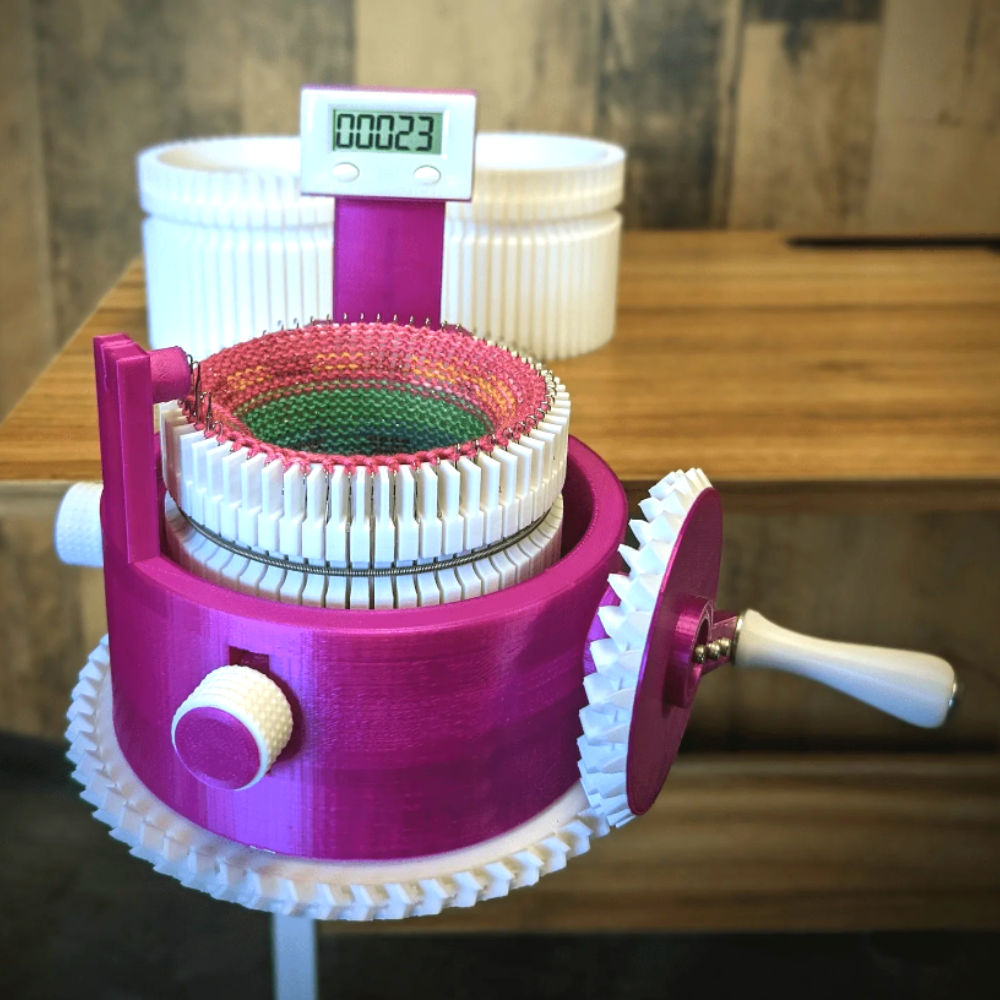
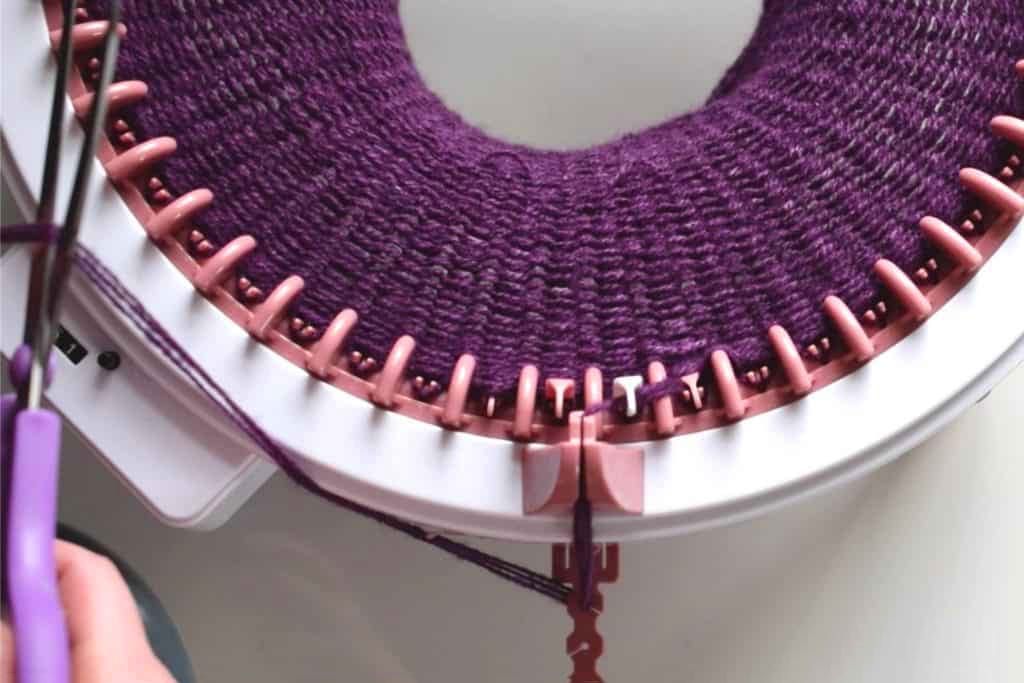
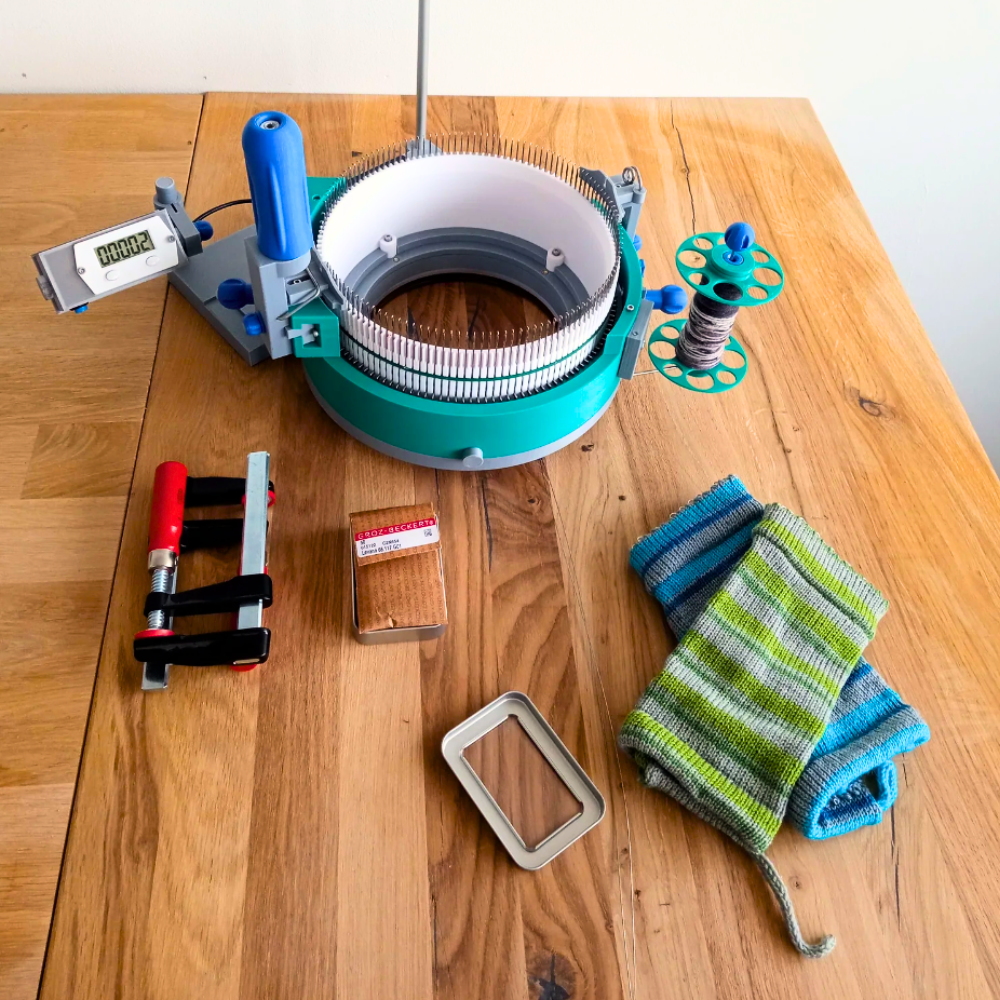
Enhancing Machine Knit Projects with Crochet Finishes
Crochet can be a hand knitter's secret weapon when it comes to adding flair and stability to machine knit projects.
By using a crochet hook to create edgings, borders, or even to construct entire sections of a garment, knitters can introduce textures and patterns that are difficult to achieve on a knitting machine alone.
For instance, crochet can be used to reinforce the edges of a machine-knit sweater, preventing them from stretching out of shape.
Additionally, crochet can be employed to add decorative elements such as lace edges, button bands, or intricate collars, giving a unique touch to otherwise simple machine knit pieces.
Incorporating crochet into machine knitting is not just about aesthetics; it can also be a practical solution for fixing mistakes or covering up imperfections.
If a slip occurs or a stitch drops during the machine knitting process, a crocheted patch or border can be an effective and attractive fix.
Moreover, crochet can be used to join together individual pieces made on a circular machine or flat bed knitting machine, offering an alternative to the mattress stitch.
This technique is particularly useful for hand knitters transitioning to machine knitting, as it allows them to apply their existing skills in new and creative ways.
Knitting Machine Maintenance and Care
Proper maintenance and care of your knitting machine are essential for its longevity and performance.
Regular cleaning, oiling, and replacing worn parts will keep your machine in top condition, ensuring that it continues to produce high-quality knits for years to come.
Addressing Common Knitting Machine Issues
Common issues like dropped stitches or tension problems can occur during machine knitting.
Learning how to troubleshoot these problems is part of the machine knitting journey.
Regular maintenance and careful setup can help minimize these issues, ensuring a smoother knitting experience.
Moreover, knowing how to identify and address problems promptly can save time and materials in the long run.
Common Causes of Dropped Stitches
There are several potential causes for dropped stitches on a knitting machine, including improper tension, damaged needles, or incorrect yarn feed.
To troubleshoot this issue, knitters should first check the machine's needle bed for any wear or damage that may cause stitches to slip off.
Next, they should examine the yarn guide and tension settings to ensure the yarn is feeding correctly into the machine without being too loose or tight.
Additionally, adjusting the stitch dial and experimenting with different tensions can also help address this issue.
Dealing with Tension Problems
Tension problems are a common challenge for machine knitters, as it can be tricky to achieve consistent tension across a large piece of fabric.
Some common causes of tension issues include incorrect yarn weight or type, damaged needles, or inconsistencies in the yarn feed.
To address this problem, knitters can try using different weights of yarn or adjusting the stitch dial and tension settings until they find the right combination for their project.
It may also be helpful to take breaks and periodically check the tension throughout the knitting process, making adjustments as needed.
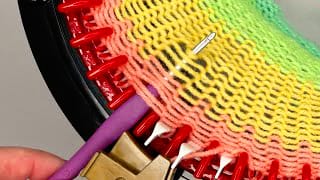
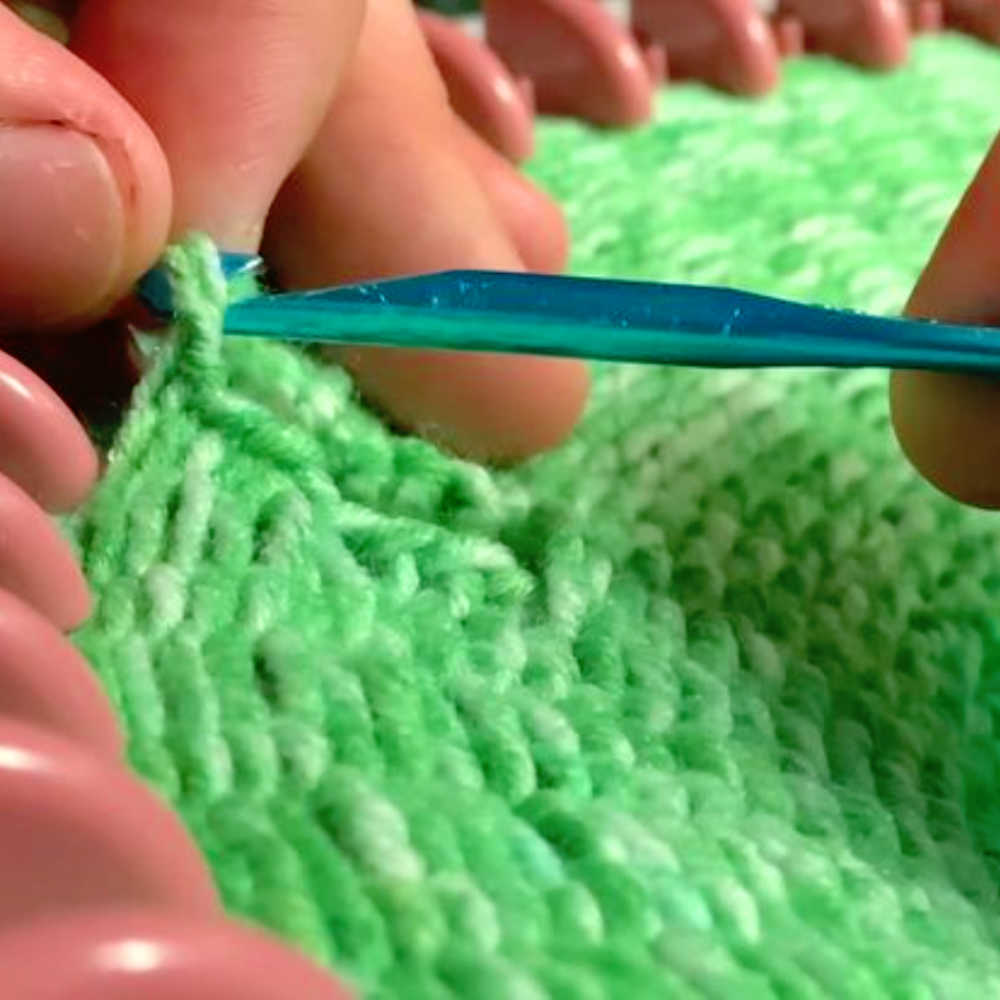
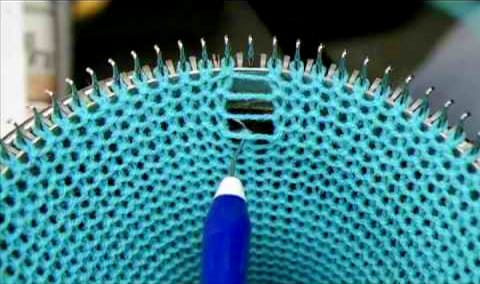
Knitting Machines and Health Benefits
For those who suffer from wrist pain or other physical limitations, knitting machines can offer a more comfortable alternative to hand knitting.
The reduced need for manual manipulation of needles and yarn can alleviate strain, allowing you to enjoy your craft without discomfort.
Furthermore, the repetitive movement of the machine can have a calming effect on the mind, promoting relaxation and stress relief.
As with any physical activity, it's essential to take breaks and stretch regularly to avoid strain or injury.
Starting a Knitting Business with a Machine
A knitting machine can be a valuable asset if you're considering starting a knitting business.
The speed and consistency of machine knitting allow for quicker production times, enabling you to fulfill orders and manage inventory more efficiently.
Moreover, the versatility of the machine enables you to create a wide range of products, from simple scarves to intricate sweaters and accessories.
Before starting a business with a knitting machine, it's essential to research your target market and develop a solid business plan that considers factors such as production costs, pricing strategies, and marketing efforts.
Machine Knitting: Blend of Art and Technology
Machine knitting offers a unique blend of traditional craft and modern technology that appeals to both skilled knitters and beginners.
With advancements in needle technology, the possibilities for intricate and customized designs are virtually endless.
Knitting machines are powerful tools that can significantly expand your knitting capabilities.
While they may not be able to replicate every hand-knitting technique, they can handle a wide variety of projects with speed and precision.
The knitting machine is not just a tool; it's a passport to a realm of virtually limitless possibility.
As the demand for custom, crafted, and unique textiles grows, these machines stand ready to assist in realizing the visions of makers worldwide.
They underscore that technology, when applied in harmony with human creativity, can significantly amplify the art of knitting, weaving a new chapter in the rich tapestry of textile design.
By understanding the different types of machines, yarn weights, and patterns available, you can unlock the full potential of machine knitting.
No matter if you're a seasoned knitter looking to expand your horizons or a beginner eager to make an impact, consider the knitting machine as your next, powerful muse in the world of craft.
So, don't hesitate - start exploring the endless possibilities of machine knitting today!

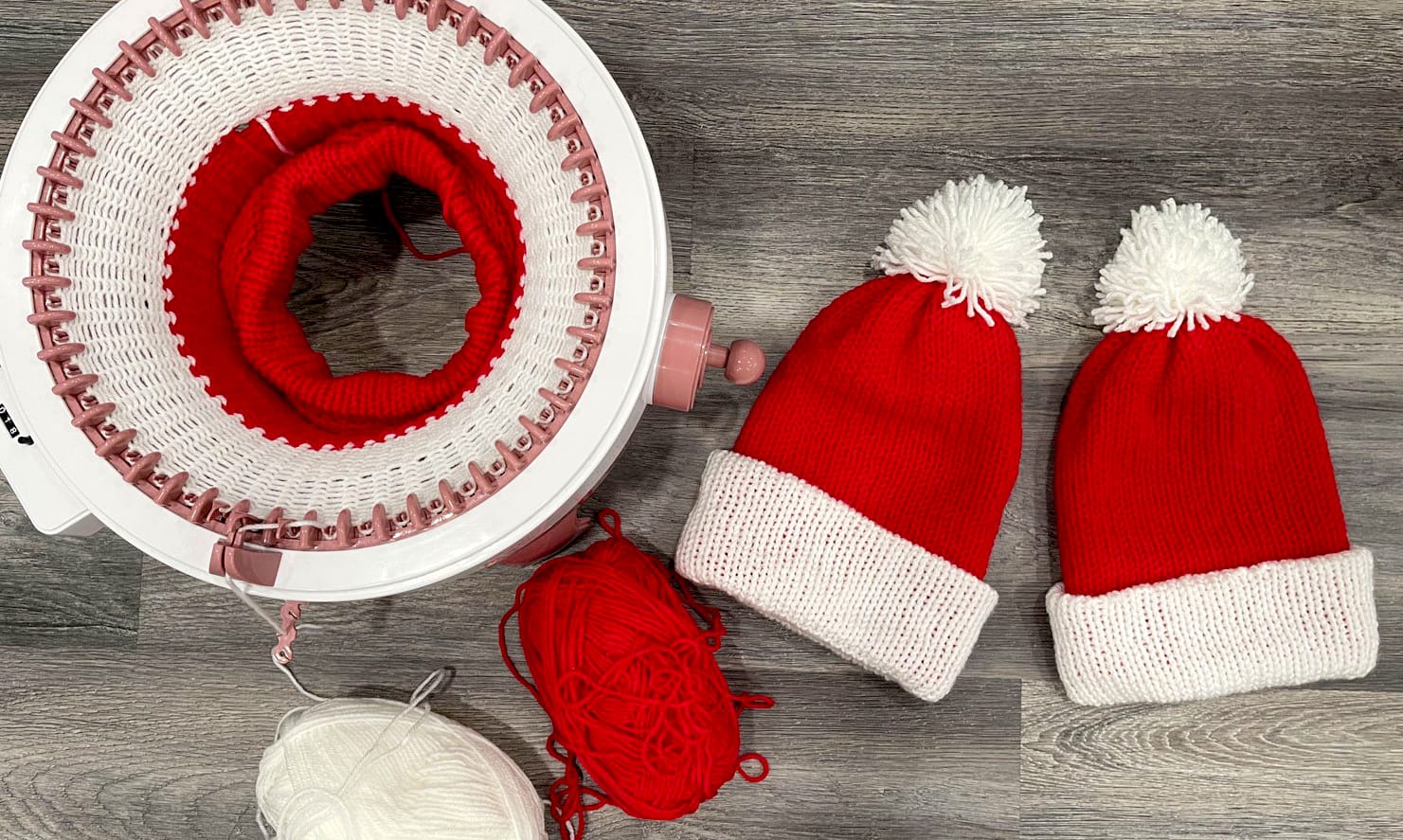
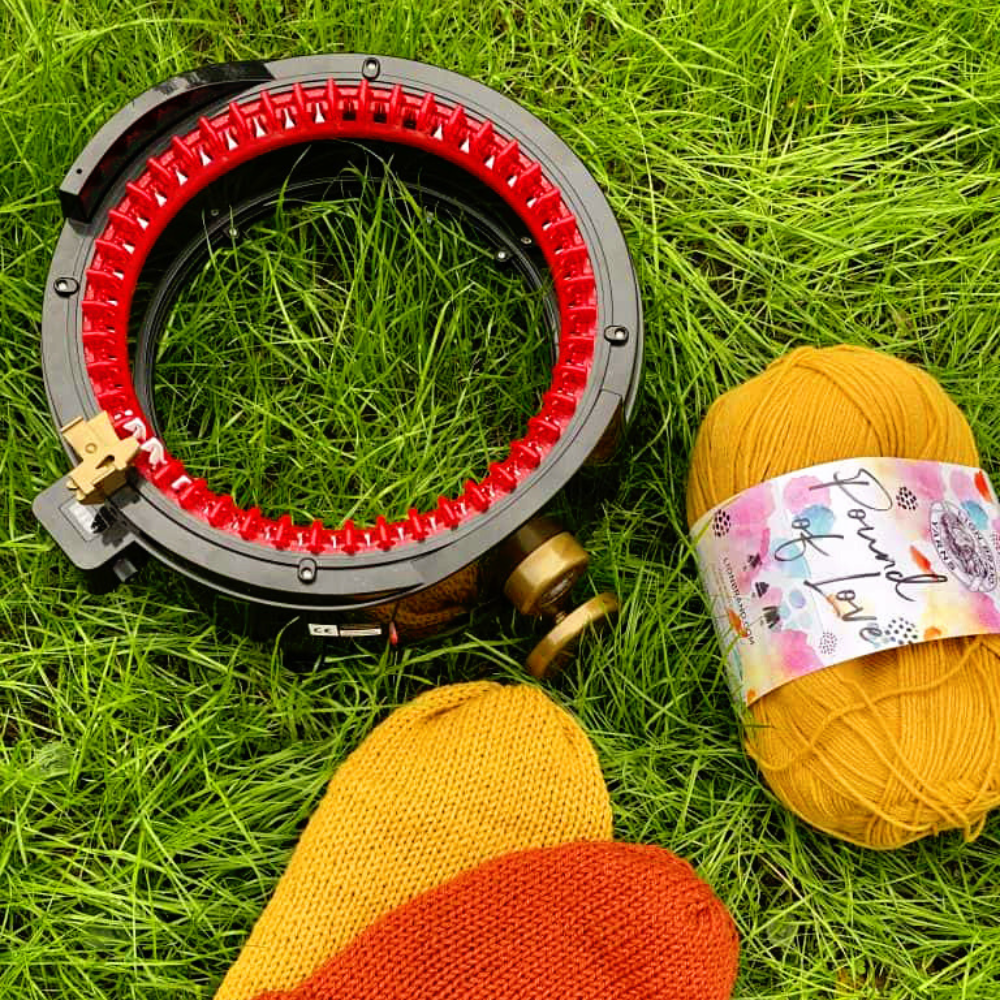
Knitting Machine FAQs
If you're new to machine knitting, you may have questions about how these devices work or what they can do.
Here are some common FAQs to help guide you on your journey:
Can knitting machines create the same textures and patterns as hand knitting?
Knitting machines can create a wide range of textures and patterns, but they may not be able to replicate every hand-knitting technique. Some complex stitches and designs may still require hand knitting.
How do I choose the right yarn for my knitting machine?
Consult your knitting machine's manual to determine the recommended yarn weight. Using the right yarn weight is crucial for the machine to function correctly and produce high-quality knits.
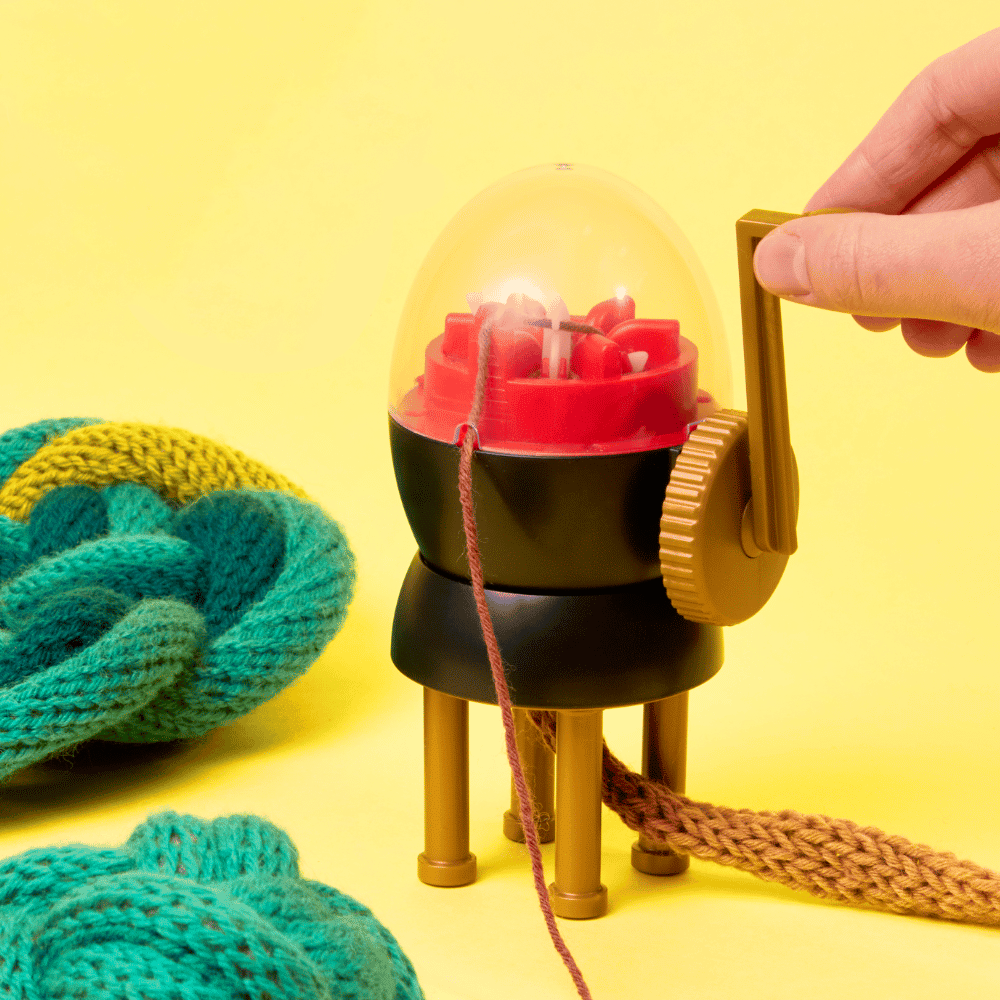
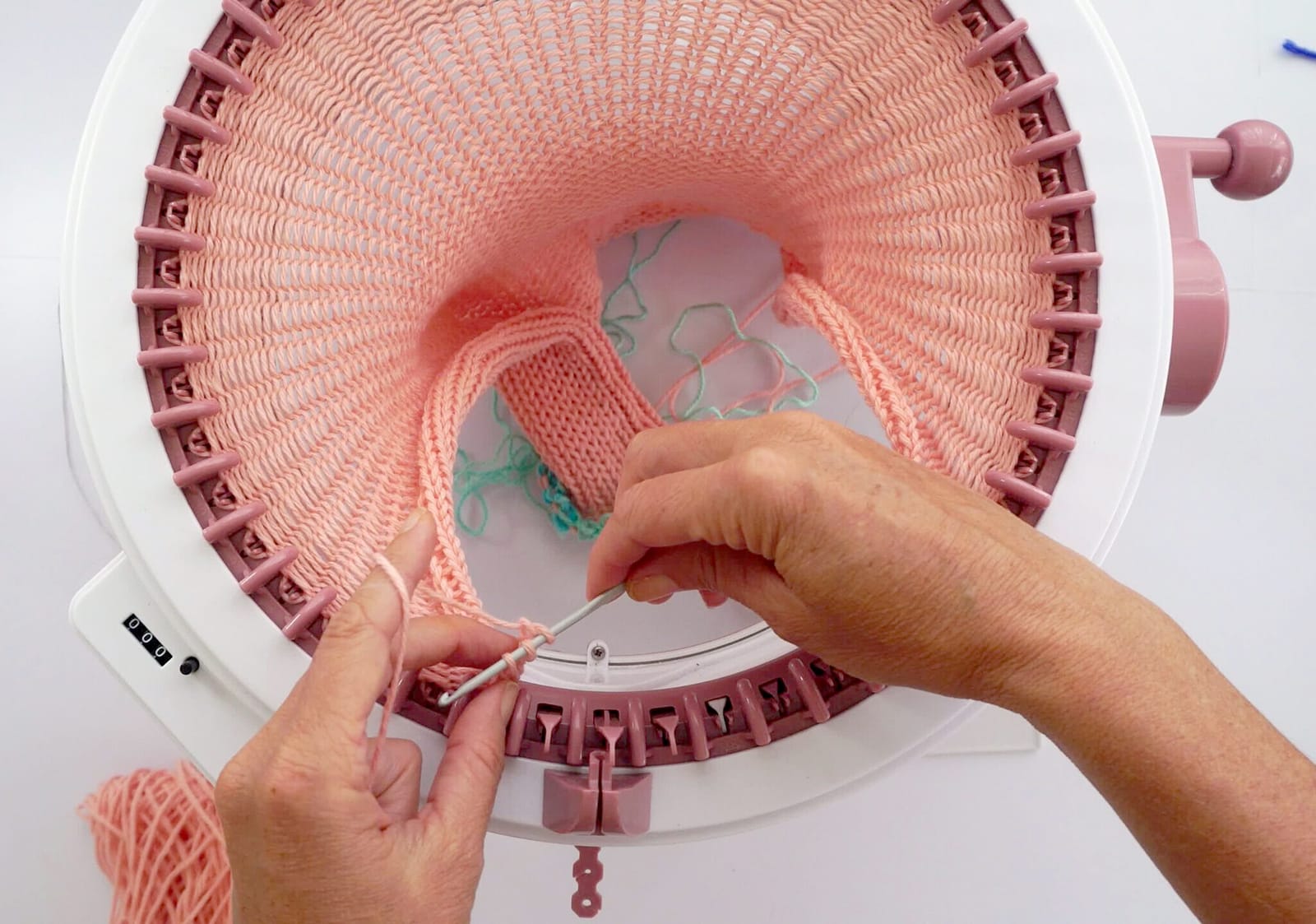

Looking for some project ideas for your knitting machine? Check out Quinn Timara's video!
Eager to learn more about knitting and knitting machines?
Check out some of our other articles:
-What are the pros and cons of circular knitting machines?
-What can you make with a Sentro knitting machine?
-What can Sentro knitting machines do?
-Is a Sentro knitting machine worth it?
-Can you make money with a knitting machine?
